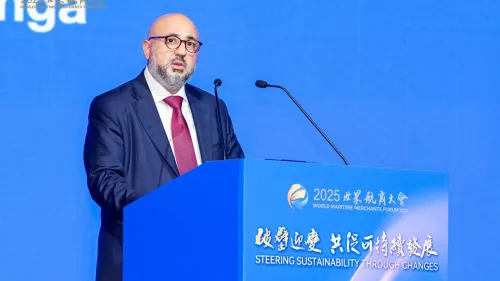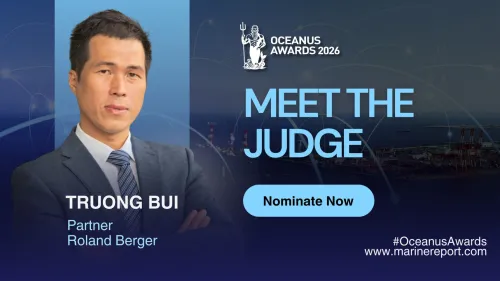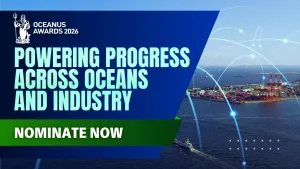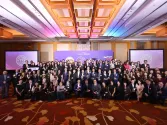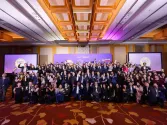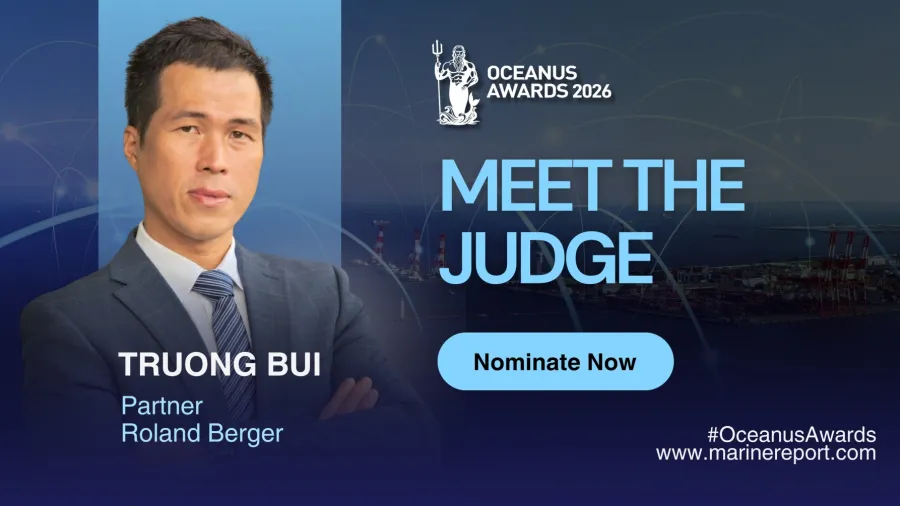
Specialised and tailored solutions drive success in competitive markets – Roland Berger’s Truong Bui
He emphasised that sustaining industry leadership requires value-chain collaboration to deliver integrated solutions for end users.
Asia’s marine and maritime industries are advancing rapidly, driven by digital innovation, sustainability demands, and shifting trade dynamics. As the region’s role in global supply chains grows, industry leaders are advancing modernisation efforts to strengthen efficiency, resilience, and competitiveness.
Truong Bui, Partner at Roland Berger, shared key perspectives. He currently leads the company's transportation practice in Southeast Asia and has spearheaded major port strategy and commercial due diligence projects across Asia, advising global port operators, logistics leaders, multinational corporations, state-owned enterprises, and regional conglomerates. His work focuses on strategic planning, market entry, transformation, and growth initiatives, strengthening competitiveness within the transportation and logistics sector.
A respected industry voice, Bui frequently speaks and moderates at modern logistics and shipping forums. His expertise covers port digitalisation, emerging logistics trends, last-mile delivery solutions, and regulatory and compliance matters, particularly in trade zones and supply chain risk management.
As a judge at the Oceanus Awards 2026, Bui discussed the region’s transformation, highlighting digitalisation, green shipping, strategic partnerships, and developments that will shape the future.
From your experience, how would you describe the current state of transformation within Asia’s marine and maritime industries?
Asia’s marine and maritime industries are rapidly transforming, driven by sustainability, technology, and regional collaboration. Governments and industry players are investing in green shipping, port digitalisation, and supply chain resilience to enhance competitiveness.
What strategies or practices set apart ports and transport companies that succeed in highly competitive regional markets?
In highly competitive markets, port operators and transport companies must differentiate themselves by offering specialised and tailored solutions. For port operators, success depends on expanding beyond port boundaries to provide integrated logistics and hinterland services, whilst closely monitoring global and regional trade routes to plan investments efficiently. For transport companies, leveraging digital technologies and innovation—such as automation, data analytics, and smart tracking—helps deliver more efficient and customer-focused solutions.
Across both sectors, sustainability remains a key priority, driving efforts to reduce emissions, adopt greener operations, and ensure long-term competitiveness. For example, in 2019, the pilot operation of the world's first fully electric shuttle carrier started promoting electric and hybrid rubber-tyred gantry cranes (RTGCs).
How are digitalisation and emerging technologies reshaping efficiency, connectivity, and competitiveness across logistics and ports?
Increasingly, ports and terminals are adopting automation, AI, and data analytics across their operations—from cargo handling and vessel scheduling to customs processing. Technologies such as automated cranes, IoT sensors, and predictive maintenance systems help reduce downtime, optimise asset utilisation, and shorten turnaround times. Meanwhile, digital platforms and blockchain enable seamless data sharing across the supply chain.
These innovations empower companies to make smarter, data-driven decisions, reduce costs, and deliver more transparent, sustainable, and customer-focused services—strengthening their competitive edge in a rapidly evolving global market.
Which innovative business models or partnerships are driving growth in Asia’s maritime and industrial sectors?
As previously discussed, maintaining competitiveness in the current market environment requires key industry players to collaborate across the value chain in order to deliver comprehensive, integrated solutions to end users. Achieving such integration is only possible through the establishment of strong strategic partnerships.
Looking ahead, what do you foresee as the most transformative developments shaping the industry in the coming years?
The transformative developments I foresee shaping the industry are geopolitical shifts, technological innovation, and sustainability and decarbonisation.
In the coming years, ongoing geopolitical tensions will continue to disrupt global supply chains and reshape trade routes. At the same time, advances in autonomous vessels and artificial intelligence will transform operations and enhance efficiency. Additionally, the industry will accelerate its transition to low- and zero-emission fuels such as ammonia, methanol, and hydrogen, driven by stricter IMO regulations and global carbon targets.
As a judge at the Oceanus Awards 2026, what key criteria will you use to evaluate nominees’ achievements and impact on the industry?
There are three key aspects I will focus on when evaluating the nominees.
First, their overall vision — the long-term goals the company aims to achieve and how clearly this vision guides its strategic direction.
Secondly, I look at companies' services and solutions, meaning the range of services or solutions they offer, how these align with the overall vision, and the value or impact they create for customers.
And finally, I consider organisational management and customer engagement, including how the company manages its internal operations and structure, and how it interacts and builds relationships with customers to ensure satisfaction and long-term partnerships.
